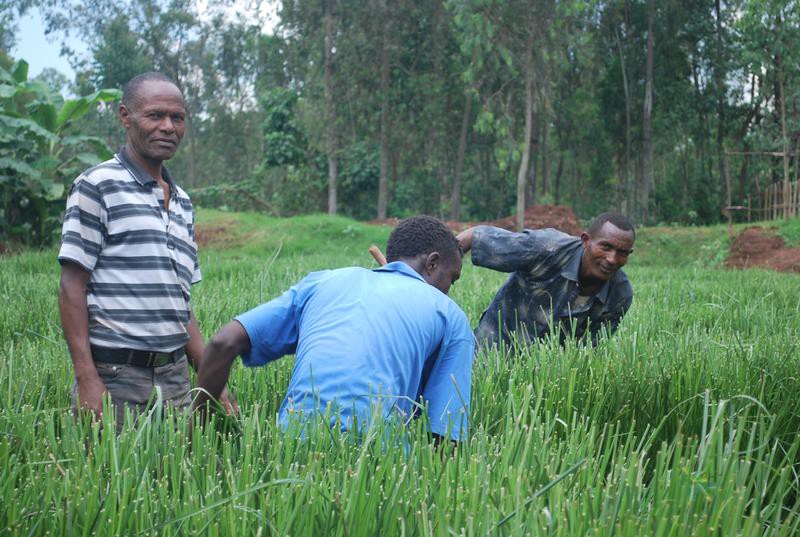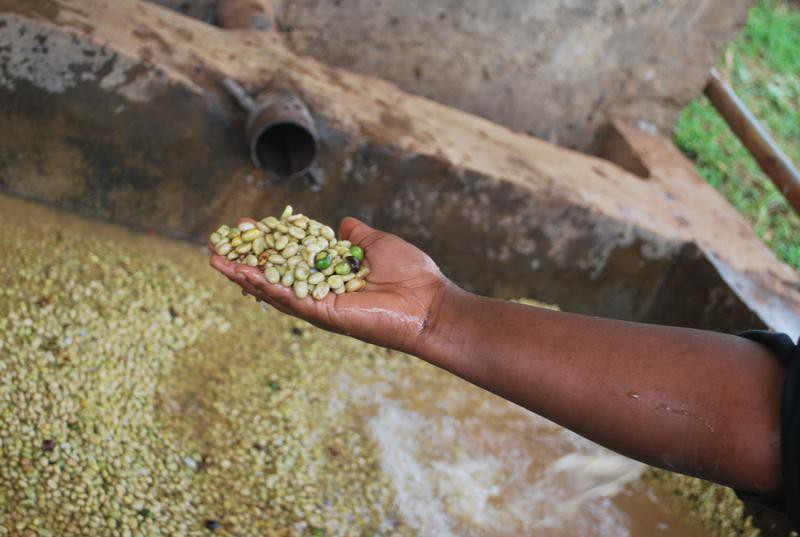

Coffee farmers along Ethiopia’s Kolla River were up against a tricky environmental problem in recent years. Pollution from their coffee mills, which are the mainstay of the local economy, was poisoning the river. But the introduction of a particular kind of grass has, just two years later, nearly turned the situation around.
“The farmers were always complaining to us,” said Tuna Toshe, an industry manager at the Dobena Wicho cooperative’s coffee mill in Dobi Sedeka village. “They were very angry [about the pollution] and took their complaint to the local government. The government’s idea to solve the problem was to make us stop operating the mill.”
That was less than ideal for the cooperative’s 2,600 members who, even having made the complaint, still suffered the consequences when they were forced to sell their coffee to another mill and accept a lower price. It was a situation members were enduring up and down the river.
The wet mills, which are operated by local cooperatives or private owners, use hundreds of gallons of water drawn from the river to pulp harvested coffee cherries, extract the beans, and then ferment them to produce green coffee–the fresh coffee that is sold to international buyers. The wastewater generated, full of pulp from the processed cherries and loaded with sugar from the fermentation process, was flowing into man-made lagoons. From there, it seeped back into the river or, in peak-processing season, simply overflowed.
Although it was the smell of thousands of pounds of rotting fruit that the villagers, farmers, and mill workers mainly talked about, there were other serious problems. Villagers rely on the river water for washing and cooking and the wet mills were turning the river water black. The villagers’ children fell sick and their animals began to die. A study by Hawassa University equated the amount of organic waste in the river during peak harvest season to that of raw sewage.

“I used to dread when the harvest season was coming because of the smell and the pollution,” said Aschameyekesh Bogale, who lives next to the Homecho cooperative’s wet mill in Homecho Chewa. “For drinking water I always use piped water, but during harvest season I would use the piped water for everything, including cooking and washing our clothes. We could only use the river once the harvest season was over.”
A potential solution came from TechnoServe, a U.S. not-for-profit that works on what it calls business solutions to poverty, and backed by Canadian coffee company Mother Parkers. Instead of channeling wastewater into a lagoon, TechnoServe proposed it could be redirected to first flow into a hopper (in effect a cylindrical concrete pond), where the pulp could be removed and used for compost for newly planted wetlands made up of vetiver grass.

The grass, which originated in South Asia, is remarkably hardy. It grows tall and in tight rows with deep roots that soak up the wastewater. It’s been used in soil conservation and wastewater treatment for several years, thanks to the work of scientist Paul Truong and others, who began working on vetiver grass in Australia back in the 1990s.
“What makes this so exciting,” said Carole Hemmings, a regional agronomist with TehcnoServe, “is the fact it’s such a simple technology. You’re just using grass. It’s clean, it’s sustainable, and once it’s there it should last forever.”
Two years after the wetland project was introduced, conditions are observably different in Dobi Sedeka, Homecho Chewa, and other villages along the river. The water is clear again and the smell of fermentation is gone. Hawassa University’s own findings–as yet unpublished–appear to confirm that pollution levels in the Kolla have dropped dramatically.
TechnoServe has implemented its wetland solution at 17 mills along the Kolla River and is rolling it out to another 10 this year. But perhaps the biggest endorsement of the new technique is that its success has spread locally and coffee cooperatives unconnected with the project are already digging and planting their own vetiver wetlands.



How We Get To Next was a magazine that explored the future of science, technology, and culture from 2014 to 2019. This article is part of our The Future of Food section, which covers new innovations changing everything from farming to cooking. Click the logo to read more.
